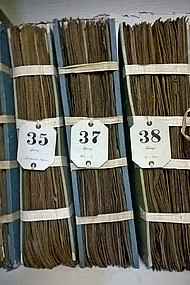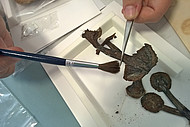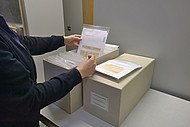Mounting, indexing and digitization of fungal collections
The fungus collections of the Karlsruhe Natural History Museum have increased almost tenfold since 2003 and today have more than 108,000 specimens (as of December 2021). Most of the collections are donations from private individuals, own collections and relocations from public collections, such as that of the University of Greifswald, which was given to the Karlsruhe Natural History Museum Karlsruhe due to a lack of specialist staff and space.
The many important collections at the Karlsruhe Museum can only be used if they are made accessible to the scientific public, i.e. if they are mounted, updated in terms of nomenclature and digitized. These works represent a focus of the mycological work at the museum. Old specimens are not only important for taxonomic studies but also to document environmental change using modern techiques.
Natural science collections often lack technical staff. That is why volunteers play an important role here. The fungus collections would also not be up to date without voluntary work. Secondary funding projects are also important. Part of the restoration work on the Greifswald University Herbarium was financed by Kulturstiftung der Länder. The collection is also supported by endowments (e.g. Freunde des Naturkundemuseums Karlsruhe e.V.) and by occasional donations.
Selected Publications
- Scholler, M., Miggel, B., Schneider, A., Starke, S., Schnittler, M. (2016):
- Terana coerulea in Mecklenburg-Vorpommern: Ein historisch interessanter Beleg aus dem 19. Jahrhundert in den Pilzsammlungen des ehemaligen Greifswalder Universitätsherbariums (KR ex GFW).. Zeitschrift für Mykologie 82: 481-492
- Scholler M. (1992):
- Julius Münter und seine Sammlungen obligat-phytoparasitischer Pilze im Herbarium Generale der Universität Greifswald (GFW). Z. Mykol. 58: 135-160









